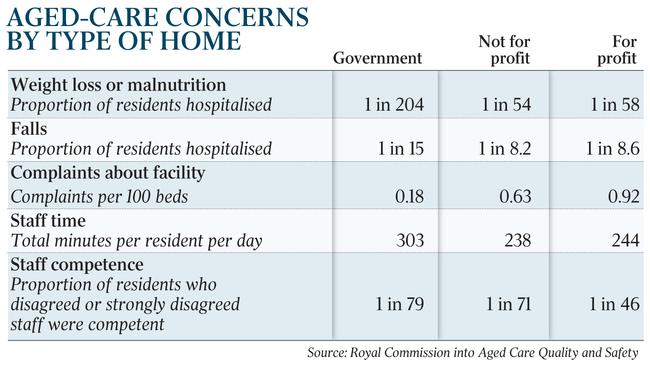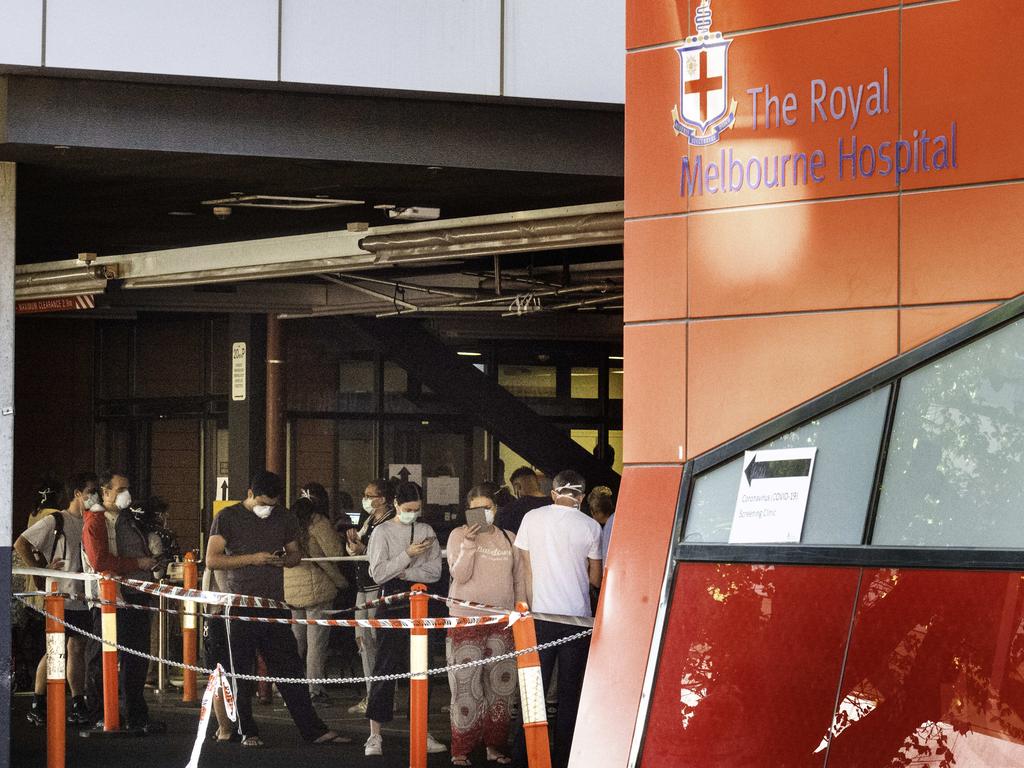Private aged care: the risks exposed
Private nursing home residents four times more likely to be hospitalised for malnutrition than those in government-run homes.

Residents in privately run nursing homes are almost four times as likely to be hospitalised for weight loss or malnutrition than those in government-run aged care homes.
And older Australians in for-profit nursing homes are five times more likely than those in government facilities to register a complaint about the home’s cleanliness or safety, and twice as likely to complain about the competence of the staff caring for them.
A study for the aged care royal commission, containing the most detailed analysis ever undertaken of residential aged care quality in Australia, finds government-run homes far outperform those run privately by not-for-profit and for-profit organisations. And smaller aged care homes with fewer than 30 beds had stronger results, the study shows.
As the commission moves towards its final report and recommendations to the federal government, due in February, the new study examines more than 30 quality indicators, exposing a yawning chasm between care in the nursing homes run by governments and the rest.
While one in every 204 residents of government-run homes were hospitalised for weight loss or malnutrition over a one-year period, the proportion for non-profit aged care homes was 1:54 and for residents in for-profit homes it was 1:58.
Similarly, one in 116 residents in government-run homes were hospitalised for dementia over a year, compared with one in 33 in for-profit aged care facilities.
The study also examined data from the Aged Care Quality and Safety Commission, finding the number of complaints raised about a facility’s physical environment, including cleanliness and pest control, were five times higher in for-profit homes (0.93 complaints per 100 beds) than for government-run homes (0.18).
And on the measure of staff competence, one in every 46 residents of a for-profit home disagreed or strongly disagreed with the contention that the staff caring for them were competent, compared with one in 79 in government-run facilities.
Overall, government facilities showed the best average results across 31 indicators, compared with two indicators for not-for-profit facilities and one for the for-profit facilities.
Of the more than 2700 nursing homes looking after nearly 220,000 older people, just 9 per cent are government-run, the majority in regional areas. Victoria has the most government-run facilities.
In their final submission to the commission last month, counsel assisting Peter Rozen and Peter Gray said the commissioners needed to take into account the better performance of government-run homes when considering the future design of aged care.
“The relatively better performance of the government sector is all the more notable because the evidence reveals that, on average, people living in government-run residential aged care facilities, at least in Victoria, have higher care needs than those in the private sector,” they said.
The counsel said it was significant that the Victorian nursing homes operated within a system that had prescribed nurse-resident ratios and a compulsory quality indicator program that had been operating for more than 15 years.
The new study also noted the stronger performance of smaller homes, especially in areas such as hospitalisation for weight loss and malnutrition and staff competence. Almost one-third of nursing homes have a capacity of more than 100 beds, with just 11 per cent being smaller facilities with 30 or fewer beds.








To join the conversation, please log in. Don't have an account? Register
Join the conversation, you are commenting as Logout